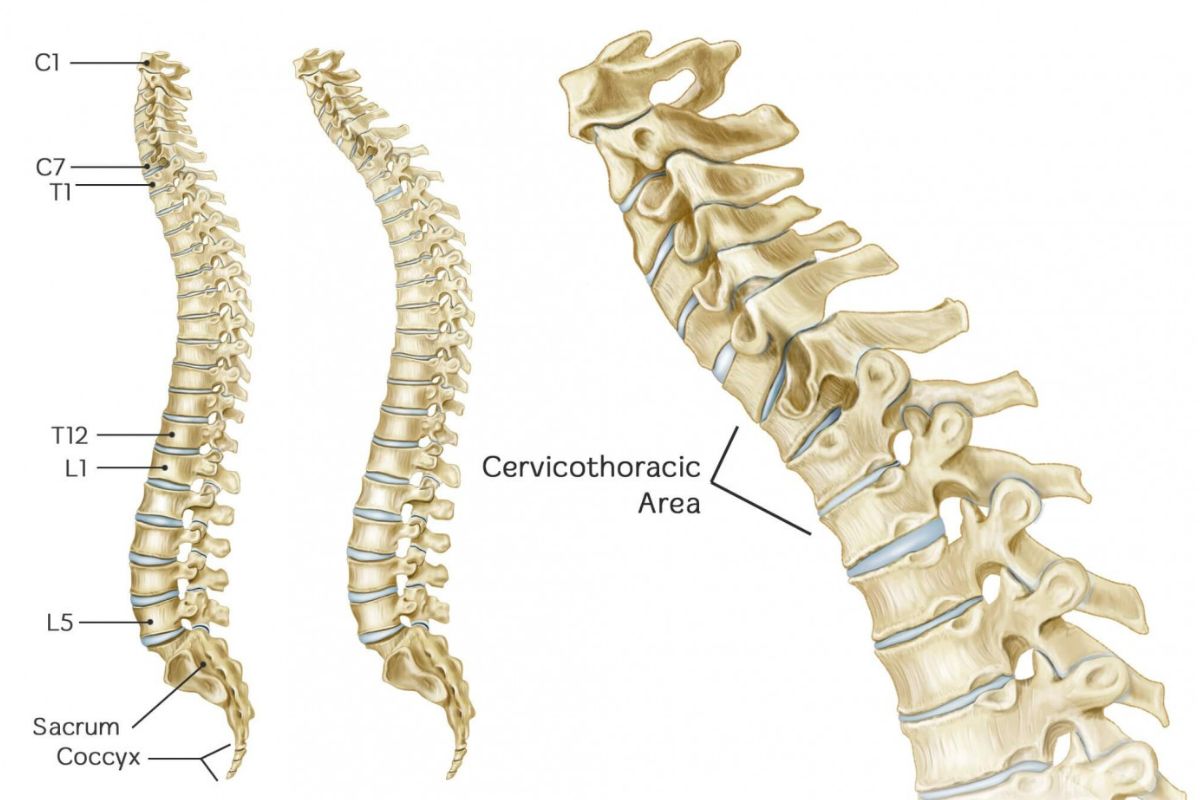
Ever wondered what the cervicodorsal region is all about? This area, where the neck meets the upper back, plays a crucial role in our daily movements and overall health. Understanding this part of the body can help you appreciate its importance and how to keep it in good shape. From supporting your head to enabling a wide range of motions, the cervicodorsal region is a marvel of human anatomy. Whether you're a student, a fitness enthusiast, or just curious, these 31 facts will give you a deeper insight into this fascinating area. Get ready to learn something new and useful!
Understanding Cervicodorsal Anatomy
The cervicodorsal region, where the neck meets the upper back, plays a crucial role in supporting the head and facilitating movement. Here are some fascinating facts about this vital area of the body.
- The cervicodorsal region includes the lower cervical vertebrae and the upper thoracic vertebrae.
- This area is responsible for the flexibility and rotation of the neck and upper back.
- The cervicodorsal junction is where the cervical spine transitions into the thoracic spine.
- The cervical spine consists of seven vertebrae, labeled C1 to C7.
- The thoracic spine has twelve vertebrae, labeled T1 to T12.
Importance of Cervicodorsal Muscles
Muscles in the cervicodorsal region are essential for various movements and maintaining posture. Let's explore some key facts about these muscles.
- The trapezius muscle extends from the neck to the mid-back, aiding in shoulder and neck movements.
- The levator scapulae muscle helps lift the shoulder blade and supports neck rotation.
- Rhomboid muscles, located between the shoulder blades, assist in retracting the scapula.
- The erector spinae muscles run along the spine, providing support and enabling back extension.
- The splenius capitis and splenius cervicis muscles help rotate and extend the head.
Common Cervicodorsal Issues
Problems in the cervicodorsal region can lead to discomfort and mobility issues. Here are some common conditions affecting this area.
- Cervical spondylosis is a type of arthritis affecting the cervical spine.
- Thoracic outlet syndrome occurs when nerves or blood vessels are compressed in the upper chest.
- Whiplash is a neck injury caused by sudden, forceful back-and-forth movement.
- Herniated discs in the cervical or thoracic spine can cause pain and nerve issues.
- Poor posture can lead to cervicodorsal pain and muscle strain.
Diagnosing Cervicodorsal Problems
Accurate diagnosis is crucial for effective treatment. Here are some methods used to diagnose cervicodorsal issues.
- X-rays can reveal bone abnormalities and alignment issues.
- MRI scans provide detailed images of soft tissues, including muscles and discs.
- CT scans offer cross-sectional images of the spine and surrounding structures.
- Electromyography (EMG) tests the electrical activity of muscles.
- Physical examinations assess range of motion, strength, and pain levels.
Treatment Options for Cervicodorsal Conditions
Various treatments can help alleviate cervicodorsal pain and improve function. Let's look at some common treatment options.
- Physical therapy involves exercises and stretches to strengthen muscles and improve flexibility.
- Chiropractic care focuses on spinal adjustments to relieve pain and improve alignment.
- Medications, such as anti-inflammatories and muscle relaxants, can reduce pain and inflammation.
- Massage therapy helps relax muscles and improve blood flow.
- Surgery may be necessary for severe cases, such as herniated discs or spinal stenosis.
Preventing Cervicodorsal Problems
Prevention is key to maintaining a healthy cervicodorsal region. Here are some tips to keep this area in good shape.
- Maintain good posture to reduce strain on the neck and upper back.
- Regular exercise strengthens muscles and improves flexibility.
- Ergonomic workstations can help prevent neck and back strain.
- Take frequent breaks during long periods of sitting or standing.
- Use proper lifting techniques to avoid injury.
Fun Facts about the Cervicodorsal Region
Let's end with some interesting tidbits about the cervicodorsal region that you might not know.
- The cervicodorsal region is highly flexible, allowing for a wide range of head and neck movements.
The Final Take
Understanding cervicodorsal health is crucial for overall well-being. This area, where the neck meets the upper back, plays a vital role in supporting the head and enabling movement. Poor posture, injuries, or degenerative conditions can lead to discomfort and long-term issues. Regular exercise, proper ergonomics, and timely medical intervention can help maintain a healthy cervicodorsal region.
Remember, small changes in daily habits can make a big difference. Pay attention to how you sit, stand, and move. If you experience persistent pain, consult a healthcare professional. Knowledge about this part of the body empowers you to take proactive steps toward better health.
Stay informed, stay active, and take care of your cervicodorsal area. Your body will thank you for it.
Was this page helpful?
Our commitment to delivering trustworthy and engaging content is at the heart of what we do. Each fact on our site is contributed by real users like you, bringing a wealth of diverse insights and information. To ensure the highest standards of accuracy and reliability, our dedicated editors meticulously review each submission. This process guarantees that the facts we share are not only fascinating but also credible. Trust in our commitment to quality and authenticity as you explore and learn with us.
